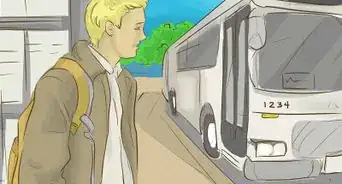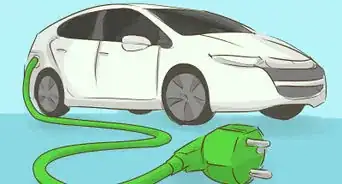This article was co-authored by Susan Stocker and by wikiHow staff writer, Jessica Gibson. Susan Stocker runs and owns Susan’s Green Cleaning, the #1 Green Cleaning Company in Seattle. She is well known in the region for outstanding customer service protocols — winning the 2017 Better Business Torch Award for Ethics & Integrity —and her energetic support of green cleaning practices.
There are 9 references cited in this article, which can be found at the bottom of the page.
wikiHow marks an article as reader-approved once it receives enough positive feedback. In this case, 100% of readers who voted found the article helpful, earning it our reader-approved status.
This article has been viewed 170,914 times.
If you'd love to be more eco-friendly but don't know where to begin, start with a few small changes. To save money at home and reduce energy use, learn how to heat, cool, and light your home more efficiently. Cut back on the amount of waste you produce by limiting plastic in your home. Choose sustainable options and plan ahead when you purchase things that are normally packaged in plastic. You can easily reduce your carbon footprint by only buying things you need.
Steps
Lowering Your Energy and Water Use
-
1Adjust your thermostat to save on heating and cooling costs. Use less energy during the hot summer months and cold winter season by controlling your heating and cooling bills. In the summer, set your thermostat to 78 °F (26 °C) when you're at home and raise the temperature when you're away. In the winter, turn your thermostat to 68 °F (20 °C) and lower it by 5° to 10° when you're sleeping or out of your house.[1]
- Use fans to cool your home or circulate the warm air from space heaters.
- To stay warm in the winter, put on a sweater or another layer instead of turning up the thermostat.
-
2Replace burned out light bulbs with compact fluorescent bulbs. To avoid unnecessary waste, wait to replace your light bulbs until they've burned out. When you do replace the bulbs, choose Energy Star-qualified light bulbs with the same wattage as the bulbs you're replacing. These use 75% less energy than incandescent bulbs and they put out 75% less heat.[2]
- This can save you on cooling costs during the summer.
Advertisement -
3Turn off lights and unplug power strips that you're not using. This is an easy way to reduce energy use. Since some devices can still use energy even when they're turned off, plug your chargers, TVs, and electronic devices into power strips. Turn off these power strips at night to completely cut off energy use.[3]
- If you need to leave your computer, TV, or game console on, try setting it to sleep mode instead of simply leaving it on.
-
4Make your faucets and toilets low-flow. Cut back on water waste by installing flow restrictor aerators inside your faucets and installing a low-flow shower head in your bathroom. This can save 3 to 4 gallons (11 to 15 liters) of water for every minute that water is running. If you're replacing a toilet, look for a WaterSense or low-flow toilet to save thousands of gallons of water a year.[4]
- Remember to fix leaky faucets or toilets as soon as you notice water dripping.
- To reduce your water use and heating bill, limit your showers to 5 minutes. If you'd rather take a bath, only fill the tub half to three-quarters full.
-
5Wash your clothes with cold water and line dry them. Adjust your washing machine to use cold or warm water instead of hot. Since more energy is spent drying the clothes, skip the machine and hang your washed clothes on a clothesline. If you don't have space for a clothesline or can't hang clothes outside, set up a clothes drying rack that you can use inside.[5]
- Try running your clothes through an extra spin cycle to remove even more water from the clothes. This will make them dry quicker.
-
6Use public transportation. Reduce your gas consumption and carbon emissions by walking, biking, or taking the bus. Keeping cars off of the road in congested cities can also improve the air quality. If you do need to drive somewhere, ask friends if they'd like to carpool so fewer cars are on the road.
Cutting Back on Plastics and Waste
-
1Use reusable water bottles and coffee mugs. Plastic water bottles and coffee cups create a lot of waste. One of the simplest ways to cut back on this plastic waste is to bring along a container that you can fill up at the fountain or hand to your barista. Many coffee shops even offer discounts if you bring your own cup.[6]
- Try to choose a sustainable material for your reusable bottle. You can buy them in glass, bamboo, and ceramic.
-
2Say no to unnecessary plastic straws, lids, and bags. If you know you're going to buy something that may come with a plastic straw, let them know when you're ordering that you don't need one. Ask businesses not to pack your items in plastic bags. Instead, bring your own reusable shopping bags, especially when you grocery shop.[7]
- If you frequently order takeout, tell the restaurant or food cart that you want the food packaged in your own containers. This way you won't get plastic utensils, styrofoam or plastic containers, paper napkins, and plastic bags.
-
3Buy items packed with paper products instead of cardboard. Choose items that contain minimal packaging that can easily be recycled. For instance, buy powdered laundry detergent in a cardboard box instead of liquid detergent that comes in a large plastic tub. Or buy the item without packaging, if possible.[8]
- For example, place several apples loose in your cart instead of buying a bag of apples wrapped in plastic with a plastic tie.
-
4Choose reusable toiletries. Instead of shaving with disposable razors, invest in a razor that you can purchase new blades for. To cut down on waste, start using reusable pads that you can wear and wash during your menstrual cycle. You can also use menstrual cups for a waste-free period.[9]
- You can also reduce bathroom waste by avoiding travel-sized items. These usually contain a lot of packaging and plastics that are difficult to recycle.
-
5Stop using plastic wrap and plastic containers for food storage. Buy a bento box, tiffin, or lunchbox that you can use to store your lunch. Store leftovers in glass containers instead of plastic bags and cover food with bees wrap instead of plastic wrap.[10]
- Remember to take jars with you when you grocery shop. You can fill them in the bulk bins to cut down on packaging.
Reducing, Repurposing, and Recycling
-
1Use items more than once. To cut back on waste, don't throw something useful away after a single use. Instead, use it again or find a new way to use it. For example, instead of throwing away a brown lunch bag, save it and use it a few more times. Or cut the bag and lay it flat so you can use the brown paper to wrap something. Once it's outlived its usefulness, recycle it.[11]
- For example, instead of throwing away wrapping paper and ribbons, use them as materials for a scrapbook.
-
2Give away things you no longer need. Ask your friends and family if they're interested in items you don't want to keep. It's a good idea to keep a bag set aside that you can add unwanted items to. When the bag gets full, have friends and family take what they want or take the bag to a charity.[12]
- Many thrift or second hand stores will give you a discount for your next purchase if you donate items.
-
3Save and reuse packaging. Use plastic food containers to store leftovers or keep old bread bags to store baked goods. Keep the waxed bags inside boxes of crackers or cereal and use them to prevent foods from sticking together. For example, lay a waxed bag between layers of prepared hamburgers.[13]
- Keep empty diaper wipe boxes and store tissues, toys, or crayons in them.
- Plant small plants in old cans and bottles. Make a garden!
-
4Buy things second-hand. If you do need to purchase things such as clothing, housewares, books, or appliances, buy them second-hand instead of ordering them new. This will save resources and packaging. To buy things used, check out:[14]
- Thrift or antique stores
- Garage sales
- Local newspaper listings
- Neighborhood exchanges
-
5Recycle materials that you can't reuse. Check with your sanitation company about what recyclables they accept. Some companies will let you mix recyclables in one bin while other companies want you to sort it. For example, you can mix paper, cardboard, and metal recyclables, but keep glass separate.
- You can usually recycle cans, paper, cardboard, plastic containers, metals, and glass.
-
6Compost food waste instead of sending it to a landfill or incinerator. You would be giving back to the environment and having a compost pile will improve soil for gardens. Avoid composting meat, citrus, tea bags, and fish. You can compost:[15]
- Grass cuttings and leaves
- Vegetable scraps
- Fruit peels and scraps
- Egg shells
- Coffee grounds
Expert Q&A
-
QuestionWhat is an eco-friendly lifestyle?
 Susan StockerSusan Stocker runs and owns Susan’s Green Cleaning, the #1 Green Cleaning Company in Seattle. She is well known in the region for outstanding customer service protocols — winning the 2017 Better Business Torch Award for Ethics & Integrity —and her energetic support of green cleaning practices.
Susan StockerSusan Stocker runs and owns Susan’s Green Cleaning, the #1 Green Cleaning Company in Seattle. She is well known in the region for outstanding customer service protocols — winning the 2017 Better Business Torch Award for Ethics & Integrity —and her energetic support of green cleaning practices.
Green Cleaning Expert An eco-friendly lifestyle involves making environmentally friendly decisions. If you want to live a more eco-friendly lifestyle, avoid using single use containers, straws, and utensils. Buy in bulk as much as possible to cut back on the packaging you use, and recycle what you can.
An eco-friendly lifestyle involves making environmentally friendly decisions. If you want to live a more eco-friendly lifestyle, avoid using single use containers, straws, and utensils. Buy in bulk as much as possible to cut back on the packaging you use, and recycle what you can. -
QuestionI would love to do this, but I feel like it's not enough for our beautiful Earth. What should I do to help even more?
 PatrickCommunity AnswerA great way to make an even greater impact is by getting others to join your efforts. Start with yourself, and then get friends and family involved. Slowly start branching out to neighbors and community members. Eventually, many people will be helping out, and your impact will be greater.
PatrickCommunity AnswerA great way to make an even greater impact is by getting others to join your efforts. Start with yourself, and then get friends and family involved. Slowly start branching out to neighbors and community members. Eventually, many people will be helping out, and your impact will be greater. -
QuestionHow can I be 100% eco friendly and convince my family to be the same?
 Katie HallettCommunity AnswerGoogle "zero-waste living." It's a lifestyle that is 100% eco-friendly because no waste is being created. As to how to convince your family to do the same, I would say just inform them about how important it is to be conscientious about what we do to our earth. But do not force them. It's ultimately up to them to choose how they want to live.
Katie HallettCommunity AnswerGoogle "zero-waste living." It's a lifestyle that is 100% eco-friendly because no waste is being created. As to how to convince your family to do the same, I would say just inform them about how important it is to be conscientious about what we do to our earth. But do not force them. It's ultimately up to them to choose how they want to live.
References
- ↑ https://www.energy.gov/energysaver/fall-and-winter-energy-saving-tips
- ↑ https://www.energy.gov/energysaver/articles/lighting-way-compact-fluorescent-lighting
- ↑ https://www.energy.gov/articles/4-ways-slay-energy-vampires-halloween
- ↑ http://www.globalstewards.org/ecotips.htm
- ↑ http://www.globalstewards.org/ecotips.htm
- ↑ http://www.bbc.co.uk/newsbeat/article/42309891/six-simple-ways-to-cut-back-on-plastic
- ↑ http://www.bbc.co.uk/newsbeat/article/42309891/six-simple-ways-to-cut-back-on-plastic
- ↑ https://www.treehugger.com/green-home/11-easy-ways-reduce-your-plastic-waste-today.html
- ↑ https://www.treehugger.com/green-home/11-easy-ways-reduce-your-plastic-waste-today.html
- ↑ https://www.treehugger.com/green-home/11-easy-ways-reduce-your-plastic-waste-today.html
- ↑ http://stylecaster.com/eco-friendly-tips/
- ↑ http://stylecaster.com/eco-friendly-tips/
- ↑ https://www.onegoodthingbyjillee.com/2014/10/63-ideas-reusing-disposable-household-items.html
- ↑ http://www.globalstewards.org/ecotips.htm
- ↑ http://www.ecofriendlykids.co.uk/composting.html
About This Article
To be eco-friendly, try to remember to turn off lights and appliances when you're not using them, which will help save energy. You can also use reusable water bottles, grocery bags, and toiletries to cut back on plastic waste. Additionally, consider walking, biking, or using public transportation instead of driving to help reduce gas consumption and carbon emissions. Recycling and reusing things can also reduce how much waste you're producing, so consider reusing plastic bags and containers more than once and recycling or composting things you can't reuse. For more tips, like how to help the environment by lowering your water usage, keep reading!
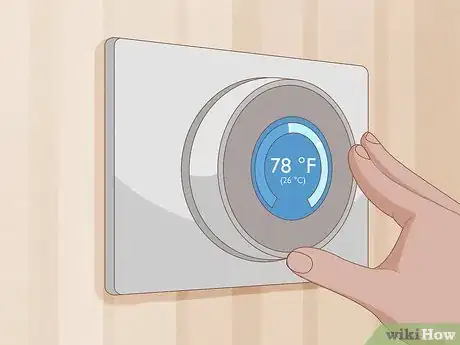


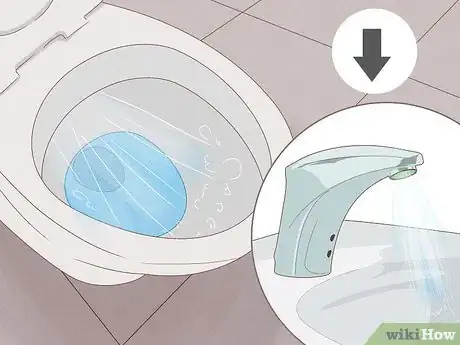
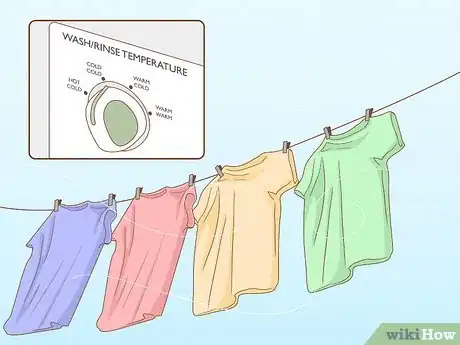
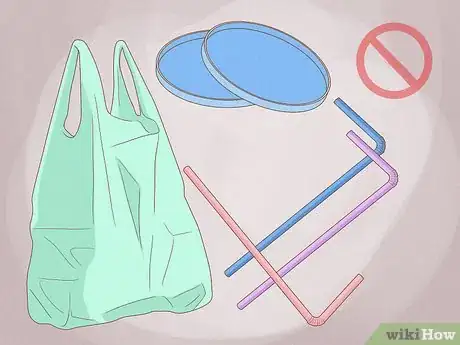
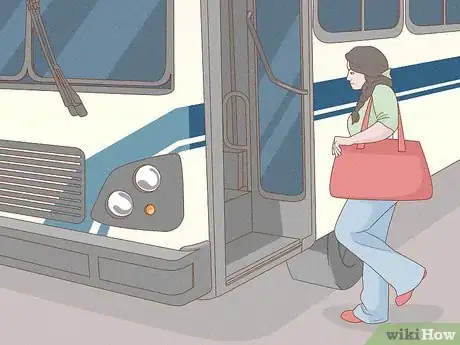
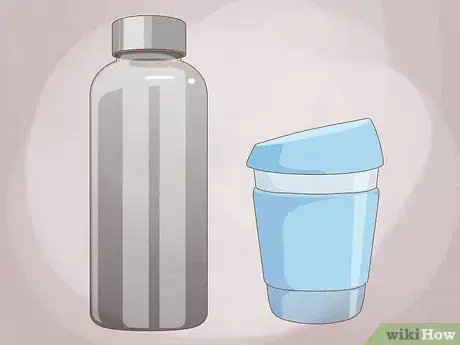
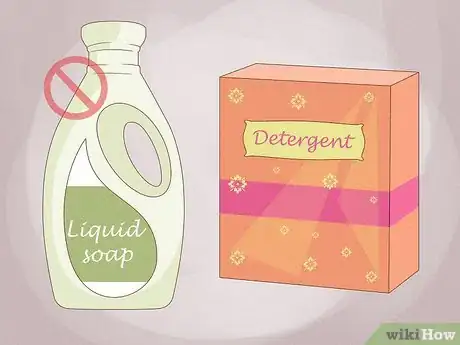
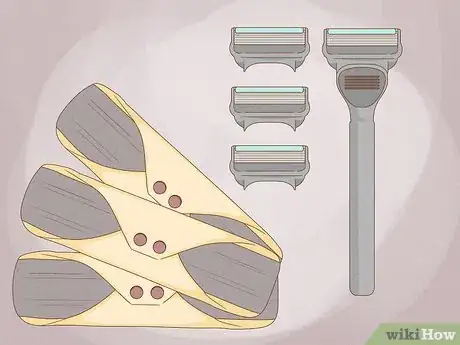


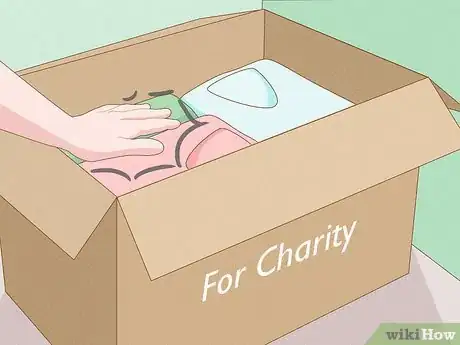
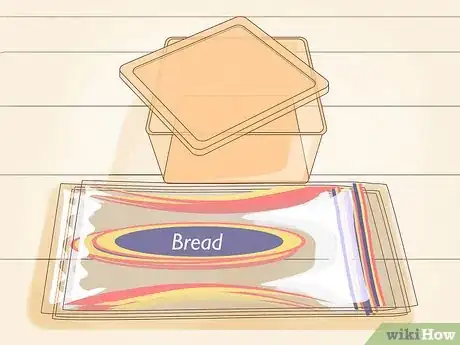
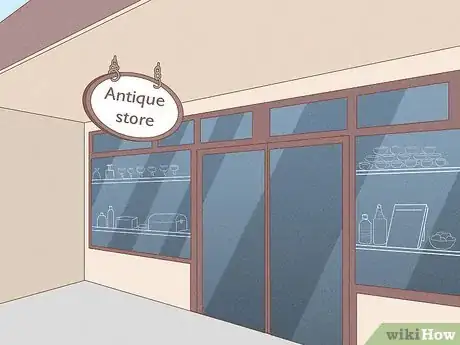

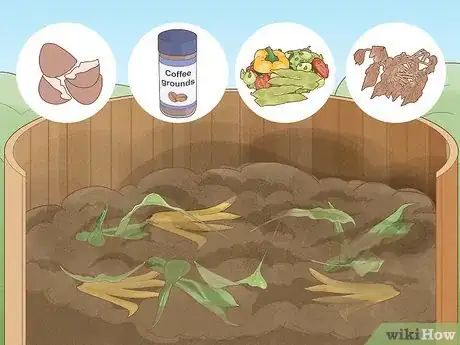


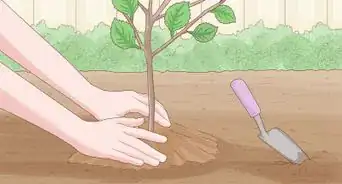
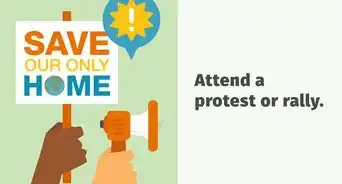


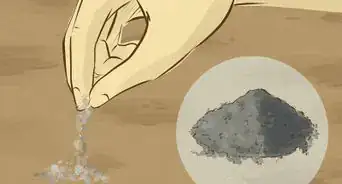

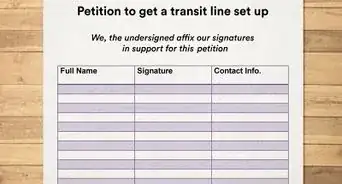
-Step-14-Version-6.webp)

